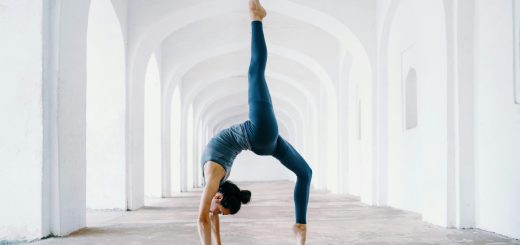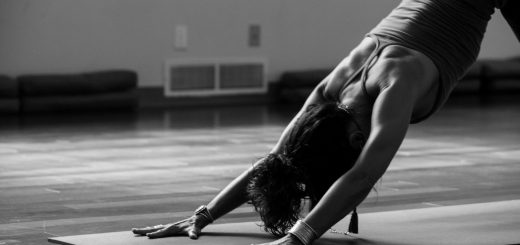The Power of Breath: Pranayama Techniques in Yoga

Before diving in, please note: This post is for informational purposes only. If you’d like to know more about how we approach topics, feel free to check out our friendly Disclaimer Page.
Hey there, amazing readers! 🖐️ Just a quick note: yes, we know there are a lot of ads here. Trust us, we get it—it’s not the prettiest look, but they help us keep this blog alive and kicking. Those pesky little ads cover the costs of all the behind-the-scenes magic, from hosting and tech stuff to creating content we hope you’ll love.
We’re committed to delivering quality posts, and your support (even just sticking around despite the ads) means everything to us. So, bear with us, and thanks for helping us keep the good vibes rolling. Now, on to the fun stuff! 😉
TRANSLATE BUTTON AT THE END OF THE ARTICLE
A Quick Overview
Breath is more than just the act of inhaling and exhaling; it’s the very essence of life.
In yoga, this idea is beautifully encapsulated in the practice of Pranayama, where the breath becomes a powerful tool for transformation.
Pranayama techniques guide us deeper into our practice, connecting body and mind, and fostering overall well-being.
This article will explore the significance of breath in yoga, the science behind it, practical techniques for beginners, and how we can incorporate these practices into our daily lives.
Discovering the Essence of Pranayama in Yoga Practice
Pranayama, derived from the Sanskrit words "prana" (life force) and "ayama" (control), literally means the extension or control of breath.
This practice is foundational in yoga, forming the bridge between physical postures (asanas) and meditation.
By focusing on our breath, we cultivate awareness and create a harmonious balance between our body, mind, and spirit.
Practicing Pranayama can enhance our yoga experience by grounding us in the moment.
When I first started yoga, I found that focusing on my breath helped me stay present during challenging poses.
Instead of letting my mind race with distractions, I learned to channel my energy into each breath, creating a meditative state.
Incorporating Pranayama into our daily routine can be life-changing.
Whether it’s a few minutes of focused breathing before bed or a longer session in the morning, these moments allow us to reconnect with ourselves.
By understanding breath as a vital component of our yoga practice, we open ourselves up to deeper levels of awareness and creativity.
Understanding the Connection Between Breath and Mind
The breath is a fascinating phenomenon.
It is both involuntary and voluntary, meaning we can breathe without thinking about it, but we can also control our breathing when we choose to.
This duality forms the perfect connection between our body and mind.
When we breathe deeply and consciously, we trigger the parasympathetic nervous system, which helps calm the mind and induce relaxation.
Conversely, shallow breathing often accompanies stress and anxiety.
I remember a particularly hectic week when I felt overwhelmed.
I took a few moments each day to practice deep belly breathing, and it was incredible how my mood shifted.
Research shows that breath control can affect our emotional state.
A study revealed that conscious breathing techniques significantly reduce anxiety levels.
By consciously altering our breath, we can influence our mental clarity, emotional balance, and overall well-being.
The Science Behind Pranayama: Benefits for Body and Soul
The benefits of Pranayama extend beyond the yoga mat.
Scientific studies have found numerous advantages to regular practice, including:
Improved Lung Capacity: Pranayama teaches us how to use our lungs more effectively, increasing overall lung capacity.
This is particularly beneficial for athletes or anyone seeking to improve their physical endurance.
Enhanced Mental Clarity: Focusing on breath helps clear mental fog.
When I practice Pranayama, I always feel more focused and alert afterward, ready to tackle the day.
Reduced Stress Levels: Controlled breathing lowers cortisol levels, the stress hormone.
Regular practice can lead to a more balanced emotional state.
Better Sleep Quality: Integrating breath techniques into a bedtime routine can help calm the mind and prepare the body for restful sleep.
Increased Energy Levels: Pranayama revitalizes the body by improving oxygen flow and energy levels.
I’ve noticed a significant boost in my energy after just a few minutes of focused breathing.
Emotional Stability: Regularly practicing breath control can enhance emotional resilience, enabling us to deal with life’s ups and downs more effectively.
The benefits of Pranayama are profound and support both the physical and mental aspects of health.
As we cultivate breath awareness, we nurture our souls and create a more meaningful connection with ourselves.
Getting Started: Basic Pranayama Techniques for Beginners
For those new to Pranayama, starting with simple techniques can help build a strong foundation.
Here are a few basic methods to get you going:
Diaphragmatic Breathing: Also known as belly breathing, this technique involves breathing deeply into the diaphragm rather than the chest.
Place your hand on your belly and feel it rise and fall with each breath.
Nadi Shodhana (Alternate Nostril Breathing): This technique balances the body’s energy channels.
Close one nostril with your thumb, inhale through the other, close it with your ring finger, and exhale through the first nostril.
Alternate for several cycles.
Ujjayi Breath: Often used during asana practice, this technique involves slightly constricting the throat to create a soft sound as you breathe.
It helps maintain focus and generate heat in the body.
Box Breathing: This method involves inhaling for a count of four, holding for four, exhaling for four, and holding again for four.
It’s a great way to calm the mind, especially in stressful situations.
Sitali Breathing: This cooling breath involves curling the tongue and inhaling through the mouth while exhaling through the nose.
It’s perfect for hot days or when you need to cool down.
Starting with these techniques opens the door to deeper practices.
It’s essential to listen to your body and progress at your own pace.
Remember, the journey of breath is personal, and there’s no rush.
Exploring Different Types of Pranayama Breathing Techniques
Once you’re comfortable with the basics, there are various Pranayama techniques to explore.
Each offers its unique benefits:
Bhramari (Bee Breath): This technique involves making a humming sound while exhaling.
It calms the mind and is particularly effective for reducing anxiety.
Kapalabhati (Skull Shining Breath): This energizing technique focuses on rapid exhalations and passive inhalations.
It cleanses the respiratory system and invigorates the mind.
Anulom Vilom: A variation of Nadi Shodhana, this technique involves equal length inhalations and exhalations, promoting balance and harmony.
Vinyasa Pranayama: This dynamic form incorporates breath with movement, linking each inhalation and exhalation with specific poses.
It’s fantastic for building flow in your practice.
Samavritti (Equal Breathing): In this technique, you inhale and exhale for the same duration.
It creates a rhythm that fosters tranquility and balance.
Each of these methods can be incorporated into your daily practice.
Experimenting with different techniques can help deepen your understanding of breath and its effects on the body and mind.
How Pranayama Enhances Your Yoga Practice and Life
Integrating Pranayama into your yoga practice can take your experience to new heights.
I’ve found that the combination of breath control and movement creates a synergy that enhances my focus and energy.
As I flow through poses, I consciously breathe, allowing my breath to guide my movements.
This connection creates a meditative state, allowing me to cultivate mindfulness.
Each inhale fills me with energy, and each exhale releases tension and stress.
Moreover, Pranayama can enhance our experiences outside the mat.
When faced with challenges, I often pause and take a few deep breaths.
This simple act helps me regain composure and clarity.
Whether in a stressful meeting or navigating a tough conversation, breath empowers me to respond rather than react.
Pranayama teaches us to be present and aware.
By embracing this practice, we can cultivate resilience and adaptability in our daily lives.
The benefits of breath extend far beyond yoga, influencing every aspect of our existence.
The Role of Breath Control in Stress Management
Stress is a common part of modern life, but breath control offers a powerful tool to combat it.
When we experience stress, our breath tends to become shallow and rapid.
Learning to control our breath can help shift this pattern.
Practicing Pranayama triggers the relaxation response in our bodies.
By focusing on deep, intentional breaths, we activate the parasympathetic nervous system, which counteracts the stress response and encourages relaxation.
For example, during a particularly stressful day at work, I took a 5-minute break to practice box breathing.
I focused on my breath, and it felt like a weight lifted off my shoulders.
I returned to my tasks feeling refreshed and more equipped to handle challenges.
Incorporating breath work into our routines can be as simple as taking a few minutes each day to check in with ourselves.
Whether it’s before a challenging task, during a break, or winding down at night, intentional breath can make a significant difference in our stress levels.
Pranayama for Better Focus: Enhancing Concentration Skills
In our fast-paced world, maintaining focus can be a challenge.
Pranayama serves as an effective tool to sharpen concentration.
When we focus on our breath, we cultivate awareness and discipline.
Techniques like Nadi Shodhana can help clear mental fog and increase clarity.
I often practice this technique before tackling important tasks or studying for exams.
It creates a sense of calm and prepares my mind to absorb information.
Additionally, breath control fosters mindfulness.
By bringing attention to our breath, we train our minds to stay present.
This practice can translate to improved focus in everyday activities, whether at work, school, or home.
Creating a habit of incorporating Pranayama into our daily routines can significantly enhance our concentration skills.
The more we practice, the easier it becomes to redirect our focus when distractions arise.
Cultivating Mindfulness Through Breath Awareness in Yoga
Mindfulness is about being present in the moment, and breath awareness is a powerful gateway to cultivating this practice.
When we focus on our breath, we anchor ourselves in the here and now.
During my yoga sessions, I’ve learned to pay close attention to my breath.
Each inhale and exhale becomes a moment of meditation.
This awareness helps me tune into my body, noticing sensations and emotions without judgment.
Breath awareness creates a space of acceptance.
Instead of rushing through poses or letting my mind wander, I learn to appreciate each moment.
This perspective fosters gratitude and joy, transforming my yoga practice into a soulful experience.
Bringing breath awareness into daily life can also be transformative.
I often pause throughout my day to take a few deep breaths, grounding myself in the present moment.
This simple act can shift my mindset, bringing a sense of calm and clarity.
Creating a Pranayama Routine: Tips for Daily Practice
Establishing a Pranayama routine can enhance your overall wellness.
Here are some tips to help you get started:
Set Aside Time: Choose a specific time each day for your Pranayama practice.
Whether it’s morning, midday, or evening, consistency is key.
Create a Sacred Space: Designate a quiet area free from distractions.
This space can be a cozy corner or a dedicated yoga mat.
Start Small: If you’re new to Pranayama, begin with just a few minutes.
Gradually increase the duration as you become more comfortable.
Listen to Your Body: Pay attention to how your body responds.
Adjust techniques based on your comfort level and needs.
Combine with Asana: Integrating Pranayama with your yoga routine enhances your practice.
Use it as a warm-up or cooldown.
Track Progress: Keep a journal to note your experiences and insights.
Reflecting on your journey can deepen your understanding.
By creating a routine, we can cultivate a habit that supports our physical and mental well-being.
The key is to find what works best for you and make it a part of your daily life.
Common Mistakes to Avoid When Practicing Pranayama
While Pranayama can be incredibly beneficial, there are common pitfalls to watch out for:
Holding Tension: Many of us hold tension in our bodies while practicing.
Remember to relax your shoulders and face as you breathe.
Rushing: Pranayama is about slowing down.
Allow yourself to breathe at a natural pace rather than rushing through techniques.
Ignoring Discomfort: If you feel pain or discomfort, stop.
It’s essential to listen to your body and respect its limits.
Neglecting Consistency: Like any practice, consistency is crucial.
Don’t be discouraged if you miss a day; simply return to it when you can.
Skipping Preparation: Ensure you’re in a quiet, comfortable space before starting.
A conducive environment enhances your experience.
By being mindful of these common mistakes, we can deepen our practice and enjoy the full benefits of Pranayama.
Remember, every breath is an opportunity to learn and grow.
Embracing the Power of Breath: Transform Your Life Today!
The power of breath is truly transformative.
By integrating Pranayama into our lives, we unlock a wealth of benefits for our mind and body.
Each inhale and exhale becomes a doorway to self-discovery and healing.
As we cultivate breath awareness, we enhance our yoga practice and nurture our overall well-being.
The techniques are not just tools; they are a path to inner peace and resilience.
I encourage you to take a moment today to pause and breathe.
Explore different techniques, establish a routine, and connect with your breath.
The journey may take time, but the rewards are immense.
Embrace the power of your breath, and watch as it transforms your life in ways you never imagined.
Conclusion
In a world filled with chaos and distractions, the practice of Pranayama offers a sanctuary of calm.
By focusing on our breath, we connect with ourselves on a deeper level, fostering balance and well-being.
Whether you’re a beginner or an experienced practitioner, the journey of breath is personal and profound.
Let us embrace the power of breath together, celebrating each inhale and exhale as a step towards a more mindful and fulfilling life.

The Enlightenment Journey is a remarkable collection of writings authored by a distinguished group of experts in the fields of spirituality, new age, and esoteric knowledge.
This anthology features a diverse assembly of well-experienced authors who bring their profound insights and credible perspectives to the forefront.
Each contributor possesses a wealth of knowledge and wisdom, making them authorities in their respective domains.
Together, they offer readers a transformative journey into the realms of spiritual growth, self-discovery, and esoteric enlightenment.
The Enlightenment Journey is a testament to the collective expertise of these luminaries, providing readers with a rich tapestry of ideas and information to illuminate their spiritual path.
Our Diverse Expertise 🌟
While our primary focus is on spirituality and esotericism, we are equally passionate about exploring a wide range of other topics and niches 🌍📚. Our experienced team is dedicated to delivering high-quality, informative content across various subjects ✨.
To ensure we provide the most accurate and valuable insights, we collaborate with trusted experts in their respective domains 🧑🏫👩🏫. This allows us to offer well-rounded perspectives and knowledge to our readers.
Our blog originally focused on spirituality and metaphysics, but we’ve since expanded to cover a wide range of niches. Don’t worry—we continue to publish a lot of articles on spirituality! Frequently visit our blog to explore our diverse content and stay tuned for more insightful reads.






